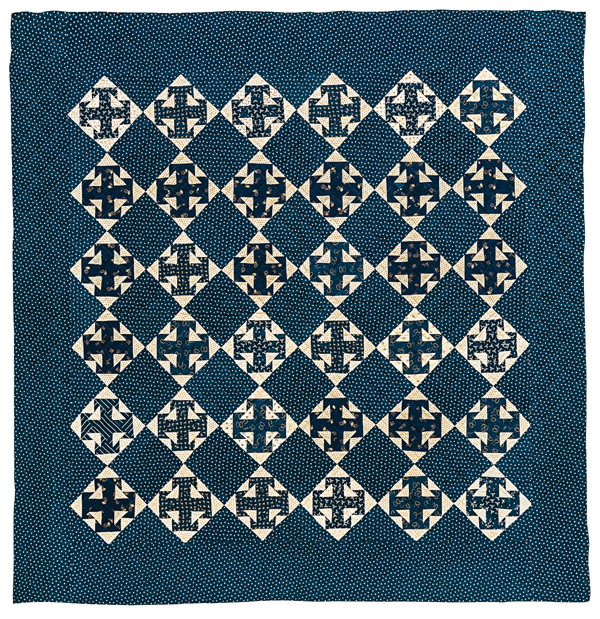
Secret treasures of the Poos Collection
By Kay and Lori Lee Triplett

Check out our sewing patterns!
One of the largest privately held quilt and textile collections in the world, The Poos Collection, was named to honour our grandmother, Martha Poos. She was an avid quiltmaker who taught both of us to quilt, however most of the quilts in the collection were not made or collected by her. The collection was actually created by Kay who, over time, purchased quilts from estate sales, antique shops, dealers and auctions both in the USA and on her world-wide travels.
The large collection has a wide variety of quilts and textiles from all over the world, but the antique quilts have a pre-1860 emphasis. As the collection is not housed in a building that is open to the public, it is not available for viewing on a regular basis. Instead, quilt lovers have to wait for a glimpse of the treasure trove in books, magazines and special exhibitions.
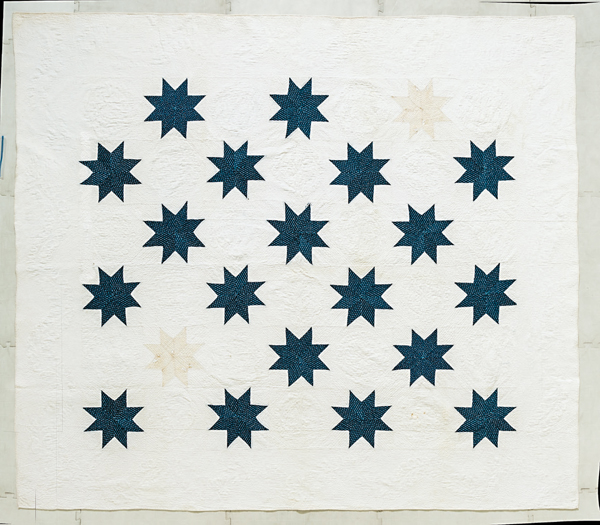
Our latest book about quilts in the collection is Indigo Quilts: 30 Quilts from the Poos Collection. The book starts out focusing on the history of indigo, one of the world’s beloved colours. When Kay lived in West Africa, she became fascinated by African artistry using indigo. It wasn’t long before she shared her love with Lori, who began to explore Adire, the indigo resist technique. As Kay’s collection of African textiles grew, similarities to some indigo resist fabrics in the United States became apparent. Thus began a long hunt for clues to solve the mystery of indigo resist in the USA.
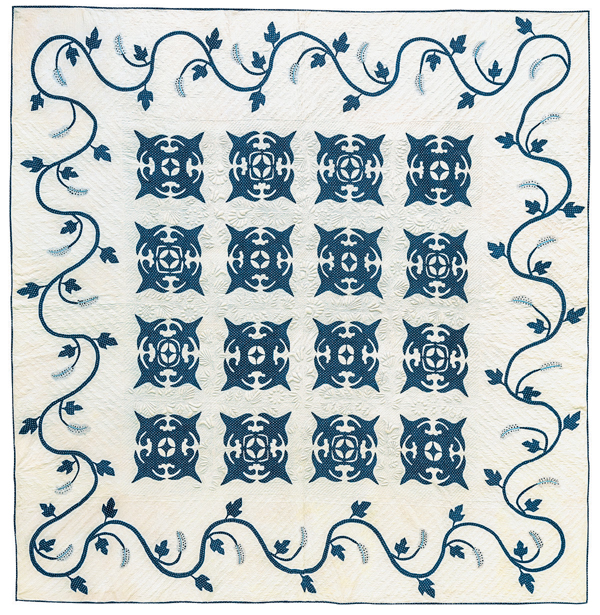
Carry all your essentials in the Le Petite Fleurs Embroidery Bag
The importance of African textiles and, more specifically, their influence on indigo has sometimes been ignored. Consequently, this seemed like the place to start — examining the use of pigments in Africa approximately 100,000 years ago. Clothing represented in stone paintings and textile fragments from before the Common Era provided further evidence of the African artistry.
Indigo dye grows naturally in Africa and has been used for centuries with a variety of resist techniques including tied, stitch, paste, wax, tree gum and mud. Indigo art is part of a lifestyle that is woven into the local culture and reflected in traditional Nigerian proverbs, such as, “It is the cotton whose seed a woman planted that her children weave with her.”
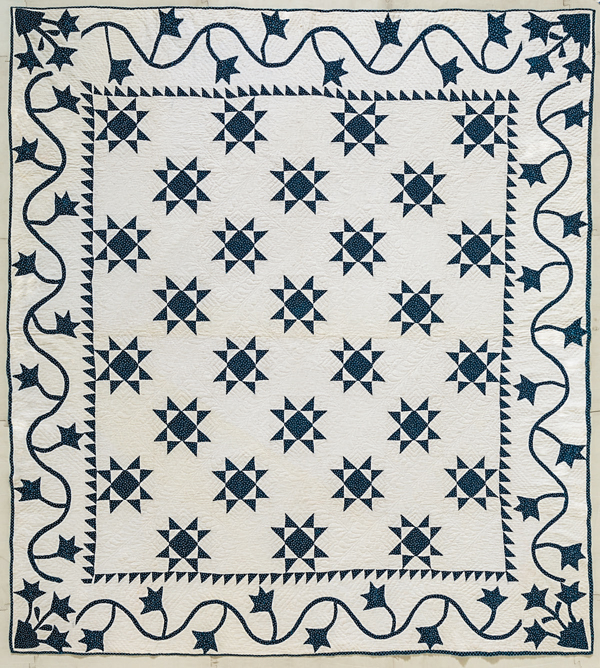
As the Africans came to the American colonies as both free and enslaved people, they brought their agricultural knowledge and skill, as well as their skill with textiles and dyeing. Their abilities and hard work helped create the indigo industry that would become the ‘blue gold’ of the south and help fund the American Revolution. But their skill in weaving and dyeing would also play a role in the production of textiles.
Besides many details and research into the history of indigo, the book also provides multiple photos of African textiles, from Ndop to raffia. But the most significant focus of the book is the 30 indigo quilts from the Poos Collection. The oldest is a quilt from the 1700s and they cover history through to the late-19th century in a variety of styles and approaches.
Because similar indigo prints were used over a long time period, it can be difficult to ascertain a specific date, so where a date has not been specifically supplied by the quiltmaker, a range of possible dates for its production has been provided. Techniques such as appliqué, reverse appliqué, piecing and mixed techniques are used in these special antique quilts.
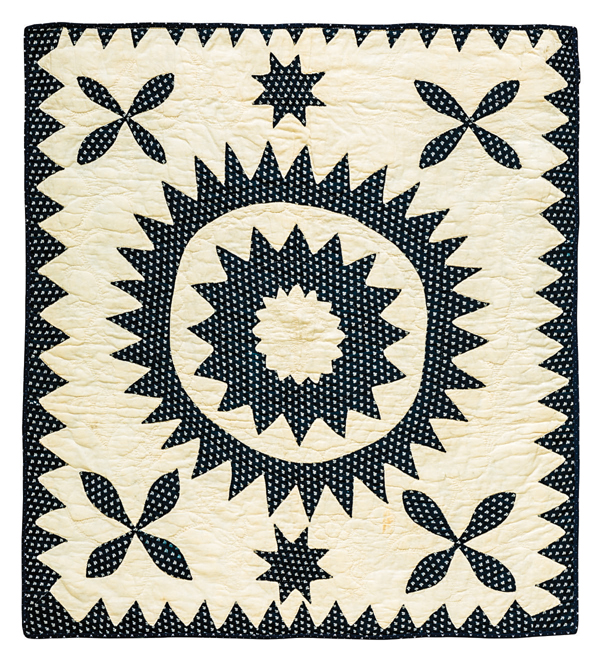
Make an outfit pop with the Brooches in Bloom embroidery!
Each quilt adds something unique to the conversation, whether it’s an amazing fabric, technique, or a textile label on the back of the quilt. Other quilts provide a hint as to why the colour indigo was treasured: it is largely colourfast. Contrast the indigo stars with the two made from non-colourfast fabric in the LeMoyne Star quilt below. The outcome, over time, has been a unique pattern of Le Moyne stars. True Lover’s Knot is the masterpiece quilt found on the cover of the book, and is also one of the five featured projects which the readers can make themselves.
We hope you enjoy the antique indigo quilts as much as we do.
Books about quilts in the Poos Collection:
Indigo Quilts: 30 Quilts from the Poos Collection, History of Indigo
Chintz Quilts from the Poos Collection
Red and Green Quilts from the Poos Collections


